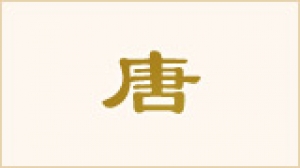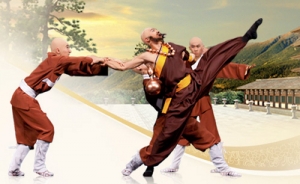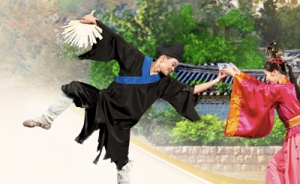The Shaolin Monks
Buddhist monks represent peacefulness, serenity, and compassion. They are also awesome meat-eating, staff-wielding martial arts masters. No? Well, as for the monks at Shaolin Temple, yes.
Shaolin Temple dates back 1,500 years to China’s Northern Wei Dynasty. Legend has it that in the sixth century, a prince from southern India named Bodhidarma crossed the Yangtze River sailing upon a single stalk of reed. He arrived at Shaolin to serve as abbot, and established there the teachings of Zen Buddhism. Over time, a distinct martial arts tradition also formed.
Today, Shaolin Temple is the heart of Chinese Zen. It is also synonymous worldwide with kungfu, or Chinese martial arts.
But there is a little-known story about these monks of the Shaolin Temple, and how it came to be that they were allowed to eat meat. It goes back to the golden age of Chinese civilization—the Tang Dynasty.
Monks to the Rescue
In the early seventh century, at the end of the Sui Dynasty, China's situation looked grim. Rebel forces occupied several parts of the empire, including strategic mountain passes near Shaolin.
In 621, yet another prince found himself in Shaolin. This time it was the Tang Dynasty’s Tang Taizong, who was on a punitive expedition against insurgents holding the city of Luoyang. For months, he kept the city under siege. Then one day, another rebel general and his 300,000 men arrived to reinforce the enemy’s ranks.
Tang Taizong was in dire straits as the two sides prepared for an ultimate showdown. Just then, he received surprise reinforcement from the Shaolin Temple, as 13 warrior monks joined his ranks. And, with their heroic contribution, and a quick, decisive battle, Tang troops emerged victorious, securing the empire.
Emperor Tang Taizong did not forget the monks’ courage and loyalty.
He dubbed their temple “number one under the Heaven,” and allowed them to maintain their own 500-man army. He also issued an edict permitting the monks to eat meat (and drink alcohol) in order to fuel their martial training.
Today at Shaolin, you can still see relics commemorating this chapter in history. These include a monument erected by late emperor Tang Xuanzong, as well as stone murals showing the thirteen monks in battle.
Shen Yun’s 2013 dance drama When Tang Monks Protect the Emperor brings this episode back to life—not without a little humor befitting the eccentric meat-eating monks.
2013年2月9日






